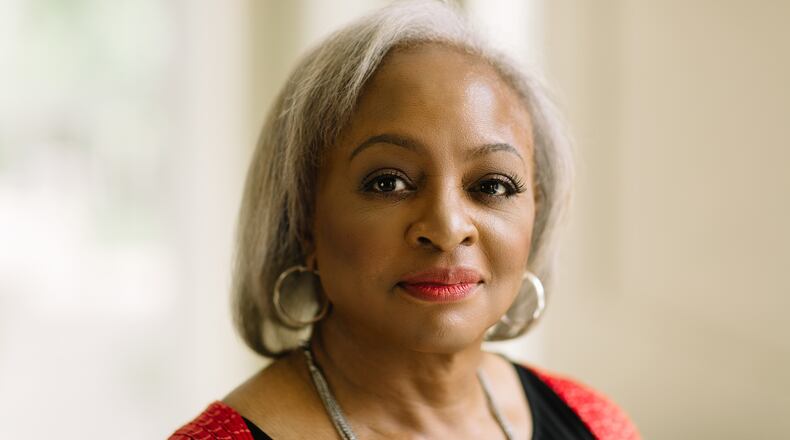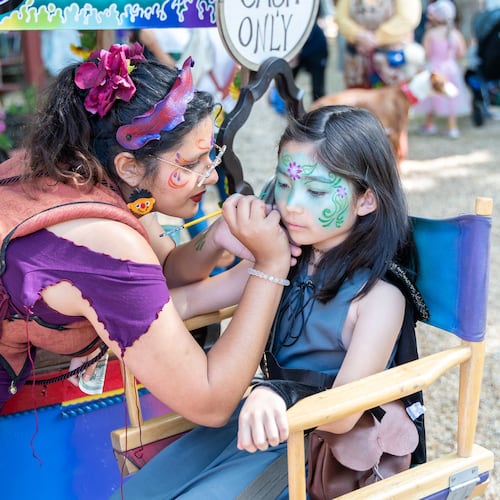The past is a “wrecked accordion,” wrote the poet Charles Wright. If Wright was correct, it follows that history must be restored and brought to pitch. Measures of dissonance are to be expected. For African American historical scholarship, this restoration of original reality — the accordion — means positioning 400 years of Black experience at the center of America’s story.
That’s the aspiration of Carol Anderson, chair of African American Studies at Emory University, whose ambitious trilogy of books ― the best-selling “White Rage” (2016), the timely “One Person, No Vote” (2018) and her newest addition, “The Second: Race and Guns in a Fatally Unequal America” ― identifies the continuities between slavery, Jim Crow and the present day. Her latest is an engaging analysis of Black history and its agonized relationship with the Second Amendment.
Anderson, who was a Guggenheim fellow for constitutional studies, makes a strong case that the Second Amendment had its origin in “anti-Blackness,” that is to say, racial fear upon which an “entire architecture of repression” has been constructed, as she explained in a recent A Cappella Books Zoom event earlier this month. She maintains that the Second Amendment’s “inclusion in the Constitution was to ensure a role for militias to control the enslaved.”
While no constitutional argument is unassailable, it’s a reasonable proposition and, thus, sure to be provocative.
In the ongoing gun-control debate, much has been made over the words “the right of the people to keep and bear Arms” and “well-regulated Militia.” Do they refer to unlimited individual gun ownership or to collective military defense? In a way, “The Second” runs a neat bootleg around this dispute: “To be clear, this is not a pro-gun or anti-gun book. Guns are not the key variable here. It’s Black people,” writes Anderson.
That African Americans were no match for the slave owner’s arsenal didn’t mitigate their resistance to subjugation — Anderson reports at least a half-dozen “insurrection scares” during the colonial period. In response to Charleston’s bloody Stono Rebellion, South Carolina’s Negro Act of 1740 became “the model for slave codes throughout North America, (requiring) heavy-handed white control that curtailed the enslaved’s movements, literacy, right to self-defense and access to firearms.”
Credit: Handout
Credit: Handout
In the Lowcountry’s labor-intensive rice culture, 18th century planters understood perfectly the consequences of the hellish society they had spawned. Anderson writes, the “combination of insatiable desire for enormous profits coupled with the sadistic brutalization of bonded African labor created an overwhelming fear among whites of the enslaved’s capacity and desire for retribution.”
Crucial to her case is James Madison, the Virginian who would become America’s fourth President. A slave owner who “believed slavery to be an abomination,” Madison was the key figure in crafting the Second Amendment. He embraced the necessity of a new constitution, siding with the Federalists, who sought a more coherent government with a national bank and a professional military.
To the contrary, the Anti-Federalists, aligned with Southern slavers like Patrick Henry, feared the centralization of power and a “standing army.” Undaunted, Madison sprinted between factions, brokering compromises that finally secured the Constitution of the United States in 1789. As an additional inducement, he promised the Anti-Federalists a Bill of Rights to follow. The Second Amendment was therefore, according to Anderson, a “bribe” that “not only elevated militias, whose primary and most important function was controlling the Black population, but ensured that the federal government’s constitutional role would not interfere in the states’ ability to use those forces when necessary.”
The Second Amendment was ratified just as the Haitian Revolution began in 1791. The news of victory for the island’s slave population would send an electromagnetic pulse wave through the white South. Charleston was as close to Saint Domingue as it was to Boston.
Would Blacks’ access to guns have made a difference in the 400 years since their arrival in the New World?
Anderson’s answer is, mostly, no. The armed power of the state, paramilitary mobs and the local police has been too great. As for the Black Panthers and their Hollywood displays of firepower in the late 1960s, she details her reasons for the failure of “armed self defense” as a political tactic. (Black Lives Matter has never endorsed this strategy.)
“(P)ervasive anti-Blackness, even after the civil rights movement, turned the Second Amendment’s law for protection — the castle doctrine, stand your ground and open carry — against African Americans,” Anderson writes, pointing to studies that indicate, “when African Americans openly carry a gun, although allowed by law, it raises exponentially the sense of danger about them and to them.”
Anderson has a gift for elegant summary. Her writing has clarity of style and a cool zeal, but do not doubt the fire. The best historians have noble intent; for them, that means nurturing an empathy for history’s victims and accepting one’s inevitable professional vulnerability: “The Second,” she said in her Zoom interview, “was a hard write,” before pausing to add, “pain over centuries.”
And so she reaches a damning conclusion: “The Second (Amendment) is lethal; steeped in anti-Blackness, it is the loaded weapon laying around just waiting for the hand of some authority to put it to use.”
As for all tomorrow’s options, Anderson reminds us of one that’s 200 years old: the vision of Gabriel Prosser, who led an 1800 slave revolt in Virginia. His objective, Anderson states, was to create “a multiracial, multi-religious, multiethnic republic.” It was as if an occult hand had nudged Gabriel well in advance of his contemporaries, the Founding Fathers, who are still trying to find themselves in the 21st century. “It is time to defuse the power of white rage,” Anderson writes. “It is time to move into that future.”
NONFICTION
“The Second: Race and Guns in a Fatally Unequal America”
by Carol Anderson
Bloomsbury Publishing
272 pages, $28
About the Author
Keep Reading
The Latest
Featured



